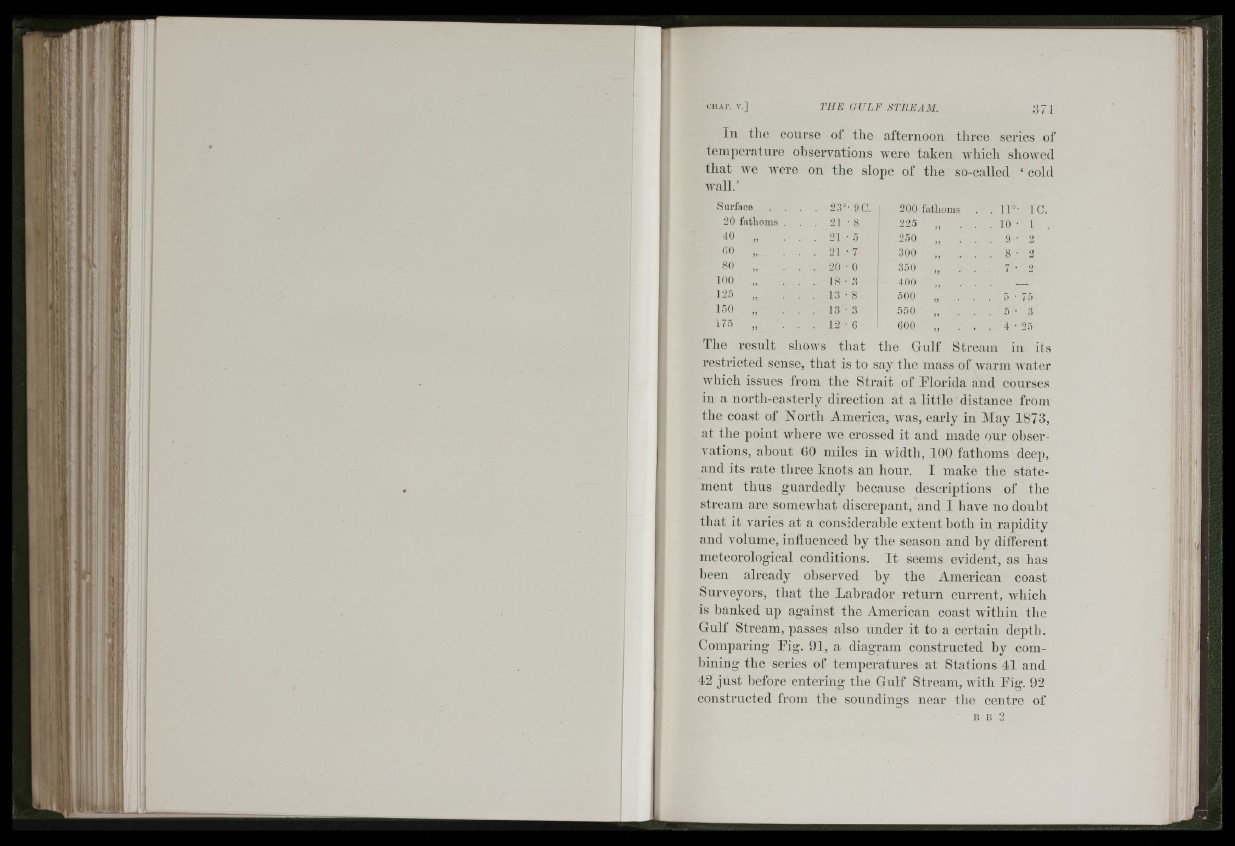
f -
i!il
{ i;
1!
In the course of the afternoon three series of
temperature ohservations were taken which showed
th a t we Avere on the slope of the so-called ‘ cold
Avail.’
Surface . . . 23°- 9C. 200 fathoms . . 11°- 1
20 fathoms . . . 2 1 - 8 225 5 ) . . . 10 • 1
40 . . . 2 1 - 5 250 J, . . . 9 • 2
CO . . . 21 - 7 300 ,, . . . 8 • 2
80 ) ) . . . 2 0 - 0 350 3, . . . 7 • 2
100 )) . . . 18- 3 400 33 . . . _
125 . . . 1 3- 8 500
150 5) . . . 13- 3 550 33 . . . 5 • 3
175 . . . 12- 6 600 33 . . . 4 • 25
The result shows th at tlie Gulf Stream in its
restricted sense, that is to say tlio mass of Avarm Avater
Avhich issues from the Strait of Elorida and courses
in a north-easterly direction at a little distance from
the coast of North America, Avas, early in May 1873,
at the point Avhere Ave crossed it and made our observations,
about 60 miles in Avidth, 100 fathoms deep,
and its rate three knots an hour. I make the statement
thus guardedly because descriptions of the
stream are somcAA'liat discrepant, and I have no doubt
that it varies at a considerable extent both in rapidity
and volume, influenced hy the season and by different
meteorological conditions. It seems evident, as has
been already observed by the American coast
Surveyors, that the Labrador return current, Avhich
is banked up against the American coast Avithin the
Gulf Stream, passes also under it to a certain depth.
Comparing Eig. 91, a diagram constructed by combining
the series of temperatures at Stations 41 and
42 just hefore entering the Gulf Stream, Avith Eig. 92
constructed from the soundings near the centre of
B B 2
li?